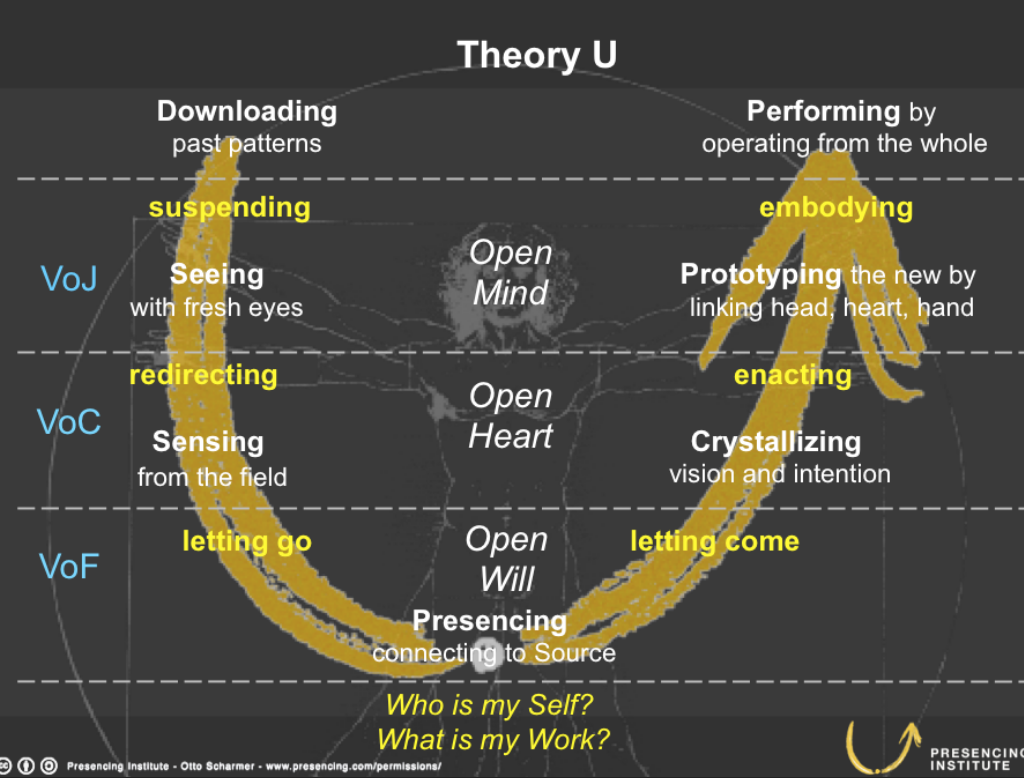Theory U
The U-process, is an innovation – or better – transformation process that allows for deep systemic change to occur. The U-process is much more able to address fundamental systems dynamics, for it also works on the level of our consciousness and thinking around a problem.
The essence of Theory-U is the realization that ‘the success of an intervention depends on the interior condition of the intervener.” Theory-U is a description of the way systems transform naturally. For any complex, living system, a phase of chaos, or not-knowing precedes change. A phase of ‘letting-go’ the existing. This is what is described in the downwards cycle of the U-process.
The left part of the U-turn. For people or organizations: it is about letting go of preset convictions. Our thinking becomes as free as possible of judgment, allowing new patterns of thinking to emerge. Subsequently, it is about opening our heart to the possibility that new solutions could really work. Usually, renewal stops, because we are openly, or unconsciously cynical about a new direction or solution.
To let go of cynicism, we need to open our hearts for other perspectives and for what can be. This happens in the ‘sensing’ phase of theory-U. But that is not all.
New solutions only emerge when we let go of the fear that solutions wouldn’t work or we wouldn’t be capable of realizing them. What remains when we let go of our fear, is our deep felt wish to connect ourselves with what can be; the emerging future.
This deepest part of the U-turn is what Scharmer and colleagues (MIT) call the phase of ‘presencing’. It requires a very focused presence in the here and now and at the same time a ‘sensing’ of what is emerging.
The cycle upwards in the U-curve describes the manifestation of new thinking. First, in rough forms, called the phase of ‘crystallizing’ and then ever more concrete, a real prototype, that has to be tested in reality, after which the whole cycle starts again. Change processes that use Theory-U as a process framework can be characterized by a felt ‘slowing down’ to see and sense better what is the real issue, to proceed more quickly once participants ‘presence’ what needs to happen to realize ‘the potential of the emerging future’.
For more information:
www.presencing.org
www.edx.org/course/
www.ottoscharmer.com/
